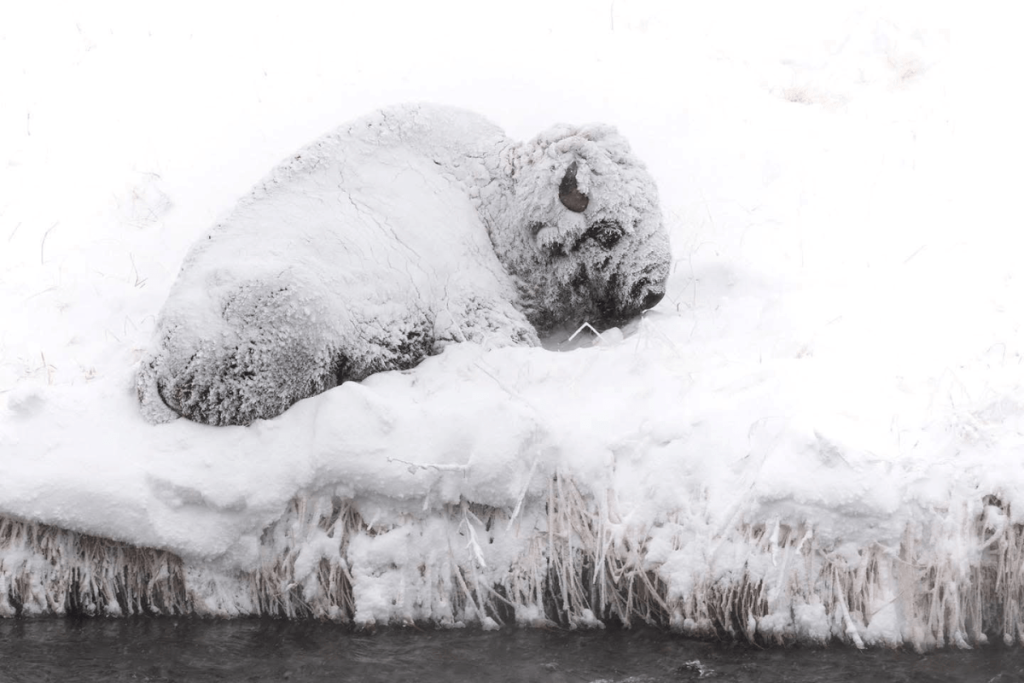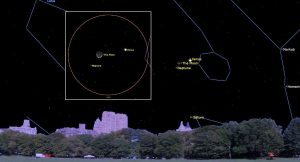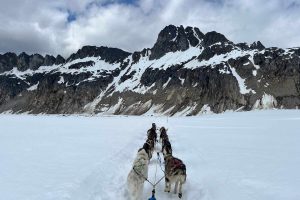
Tens of millions of wild bison once roamed across western North America. Today, wild bison occupy less than one percent of their former range. Yet in spite of this, the National Park Service’s new bison management plan does nothing to expand the range of the 5,000 wild bison that live almost exclusively in Yellowstone National Park.
Instead, the Park’s new bison management plan is based on outdated and unscientific assumptions that result in thousands of wild bison being slaughtered to theoretically prevent them from infecting cattle with brucellosis, a disease that can cause cattle to abort.
The State of Montana, meanwhile, takes the position that almost all of the bison that cross the Park’s invisible boundaries at the wrong time and place should be killed. Too bad no one told the bison that their natural annual migration was wrong. The result has been about one-quarter of Yellowstone’s herd being slaughtered in years with deep snow for doing nothing more than following their genetic instincts to migrate to lower elevations in the winter for food.

Despite there never having been a documented case of bison transferring brucellosis to cattle, the government’s 25-year-old management plan, originally issued in 2000, focused on wild bison as a threat to the state’s cattle industry.
That, however, is no longer accepted science. The federal government itself undertook an exhaustive study to determine if the Park’s brucellosis management was working. Contrary to the original assumptions, the study found that over the past 20 years, it has been wild elk — not wild bison — that transmitted brucellosis to livestock 27 times. Wild bison were not responsible for a single transmission.
However, when the Park Service prepared and approved its new plan in 2024, the agency refused to consider a single alternative in the new plan’s Environmental Impact Statement that addresses the proven source of brucellosis transmissions to livestock, which are elk, not bison.
Astoundingly, the Park Service also failed to analyze where and when natural Yellowstone bison migration paths might overlap with cattle grazing on Bureau of Land Management and Forest Service lands outside Yellowstone National Park. Without this basic information, it’s impossible to know where cattle might possibly interact with wild bison. Consequently, we don’t know where — or even if — the Park and State’s aggressive and controversial management practices are needed to keep cattle separate from wild bison.

Additionally, and critically, after more than 20 years, the management tool most used by the government — the highly controversial “capture and slaughter” of thousands of bison — has failed to reduce the percentage of Yellowstone bison that test positive for brucellosis antibodies. And yet the government just reauthorized the use of this tool that has proven to be ineffective at reducing brucellosis.
This is why we sued. You can see our complaint here. The Park’s new management plan fails to provide any rational reason whatsoever to continue hazing, capturing, and slaughtering the nation’s last herd of wild bison. We are going to court to force the Park Service to follow the law, analyze these issues using the best available science, and stop the senseless harassment and pointless slaughter of our national mammal.
The Alliance for the Wild Rockies believes bison management decisions should be based on science, not fear.






